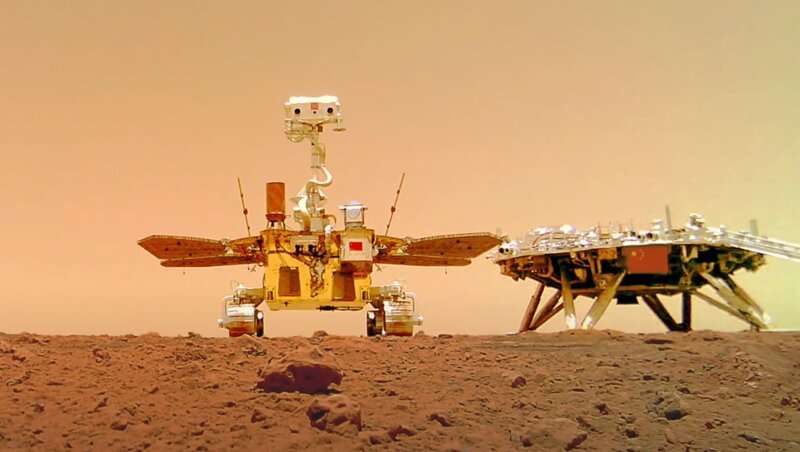by Bob Yirka , Phys.org

A team of researchers affiliated with multiple institutions in China and one each from Canada and Germany, has found data from the Chinese Mars rover Zhurong over its first 60 sols, showing evidence of wind erosion and possibly impacts from water erosion, as well. In their paper published in the journal Nature Geoscience, they discuss what they have found thus far.
China's Mars rover Zhurong has been on the surface of Mars since May of last year. During that time, it has rolled approximately 450 meters over the course of 60 Martian days (sols). Recently, the team working with Zhurong made the data from the rover public. In this new effort, the researchers have been studying the data sent back to learn more about what it has found.
Zhurong was deployed on the planet's Utopia Planitia—a volcanic plain situated in the northern hemisphere. It is a site that some have suggested was likely once covered with water. Data from the rover's cameras showed that the part of the plain where Zhurong has been rolling along is generally quite flat, with very few boulders. And data from the wheels showed that the surface beneath the rover is covered with small, non-round rocks. Zhurong has also been collecting soil samples as it wanders—thus far, the composition of the soil in the area is similar to that collected by rovers on other parts of the planet.
Image data has also shown that the small rocks have etched grooves on them that appear to be due to wind erosion. They also found some evidence of flakiness in some of the rocks, possible evidence of water erosion.
The researchers also found evidence of mega-ripples on the surface—features formed by wind—similar to sand dunes on Earth. They found the ripples appeared as bright streaks when viewed from an orbiting craft. They theorize the reason the ripples appear so bright is because they have been covered by a very thin layer of dust. If that turns out to the be case, they note, it would suggest that the wind that had formed the ripples was no longer present.
More information: L. Ding et al, Surface characteristics of the Zhurong Mars rover traverse at Utopia Planitia, Nature Geoscience (2022). DOI: 10.1038/s41561-022-00905-6
(Source: https://phys.org/news/2022-03-mars-rover-zhurong-evidence-possibly.html)